This may sound wierd at first. But I think the most efficient scrubber would have 2 screens and 3 lights. 1 per each end and 1 in the middle. Then you have 4 sides lit with 3 lights. Whereas right now most of our scrubbers are running 2 lights for 2 sides. Also remember that if you were to do this in a 5 gallon bucket you will benefit from using a WHITE bucket or spray painting the inside white as white has reflective qualitys and is CHEAP.
Mega Powerful Nitrate and Phosphate Remover - DIY!
- Thread starter SantaMonica
- Start date
Great Post! I am going to build one for my tank!
While I was reading this post, I realized that this system is actually an hydroponic system. I have been using something similar to grow riccia and java fern (java fern grow like crazy with this) in a green house for over a year. I that case, I had to add fertilizer to the water. I never thought I could use that same system for my tank!
Thanks!!!!!
While I was reading this post, I realized that this system is actually an hydroponic system. I have been using something similar to grow riccia and java fern (java fern grow like crazy with this) in a green house for over a year. I that case, I had to add fertilizer to the water. I never thought I could use that same system for my tank!
Thanks!!!!!
.
Scrubber FAQ 1.0 is now complete, and will be updated periodically:
Algae Scrubbers • View topic - ALGAE SCRUBBER FAQ 1.0
Scrubber FAQ 1.0 is now complete, and will be updated periodically:
Algae Scrubbers • View topic - ALGAE SCRUBBER FAQ 1.0
Part 1 of 3
Here is an easy DIY for a nano. This one starts with a Marineland Eclipse 6 gallon, which was chosen because of the easy-to-access hatch on the top:
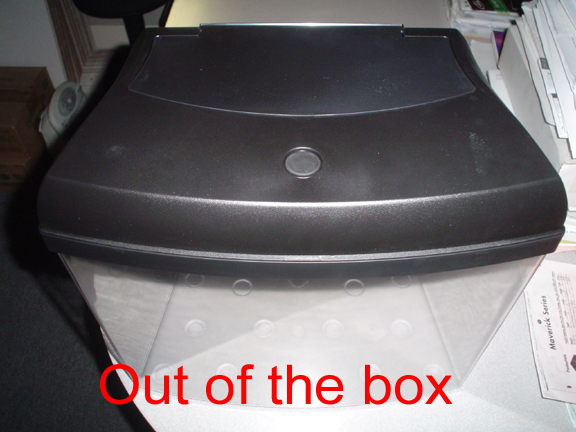
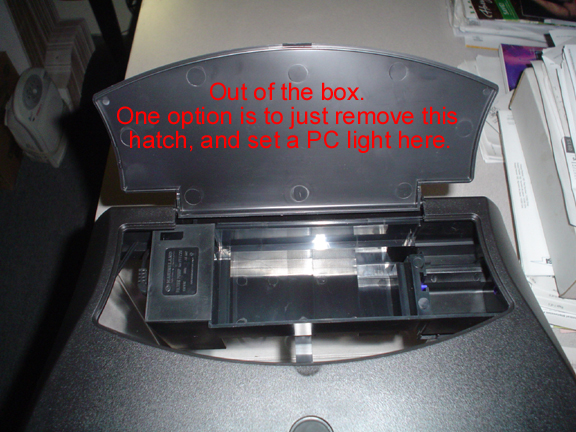
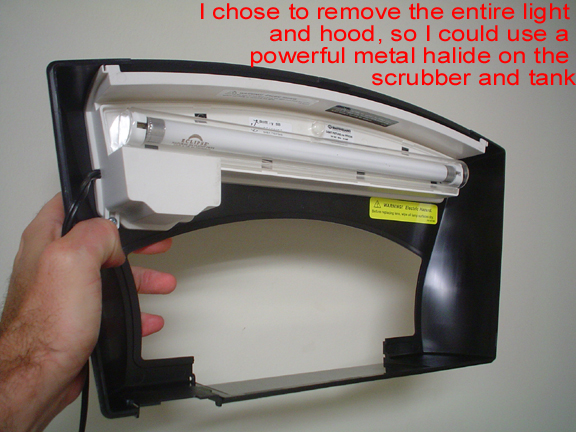
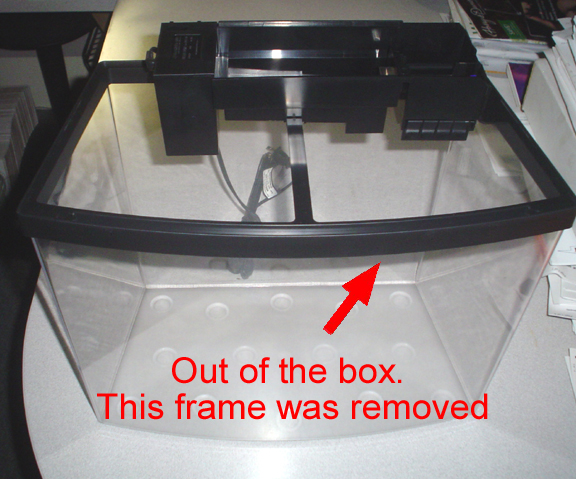
First thing you need to do to the filter box is cut out this section, using a Dremel cut-off tool, or even a soldering iron:
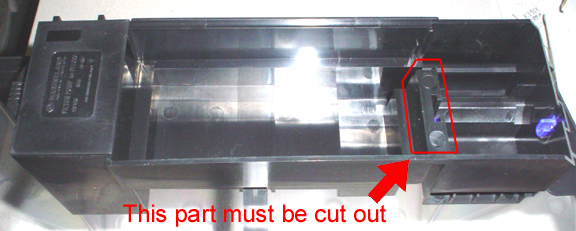
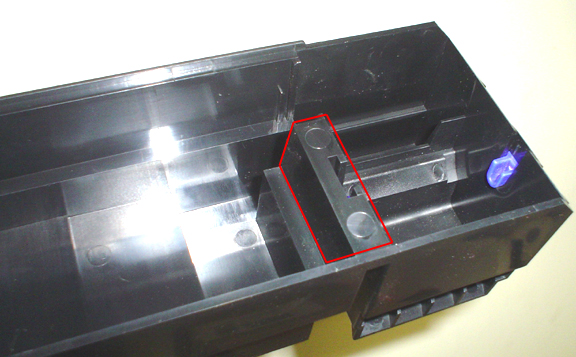
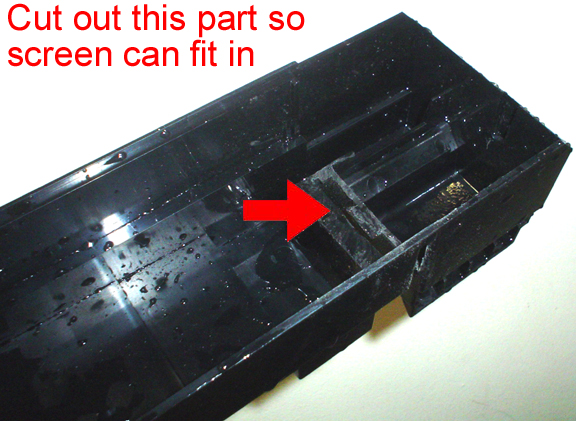
Doesn't need to be a smooth cut, since water will be draining down through the holes anyway.
Now, test fit the filter box on the back wall:
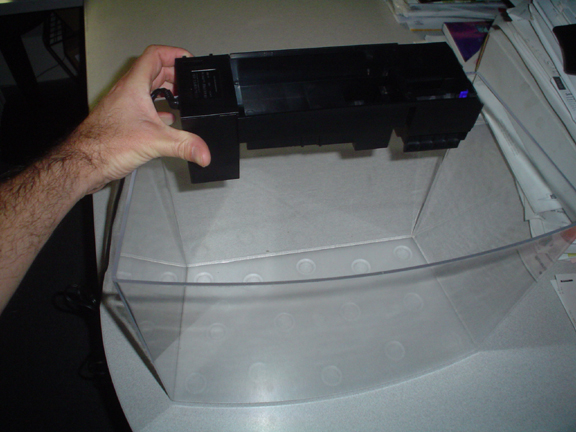
Here is an easy DIY for a nano. This one starts with a Marineland Eclipse 6 gallon, which was chosen because of the easy-to-access hatch on the top:




First thing you need to do to the filter box is cut out this section, using a Dremel cut-off tool, or even a soldering iron:



Doesn't need to be a smooth cut, since water will be draining down through the holes anyway.
Now, test fit the filter box on the back wall:

Part 2 of 3
Looking from the backside, see how the filter box will set on the wall:
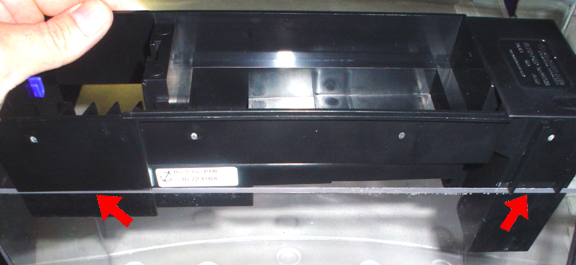
use a little bit of scrap plastic to raise this side a bit:
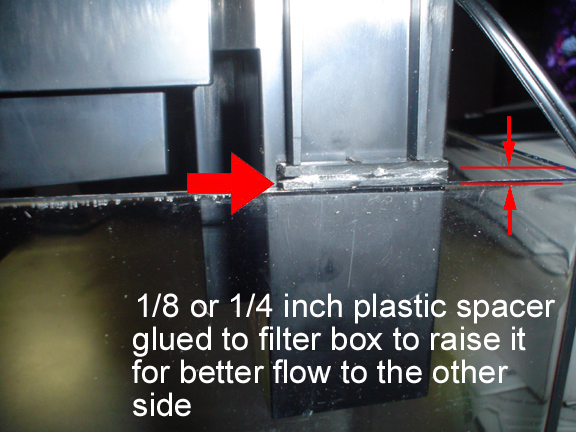
Now, epoxy some plastic sheet (I just cut them out from the hood material) onto the filter box so that it will hook onto the wall; the epoxy will also hold the little plastic scrap in place too:
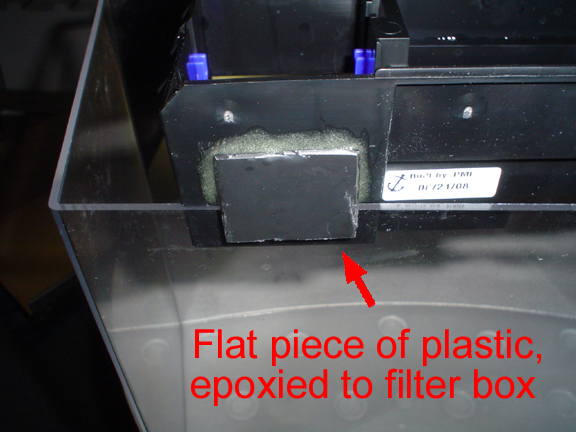
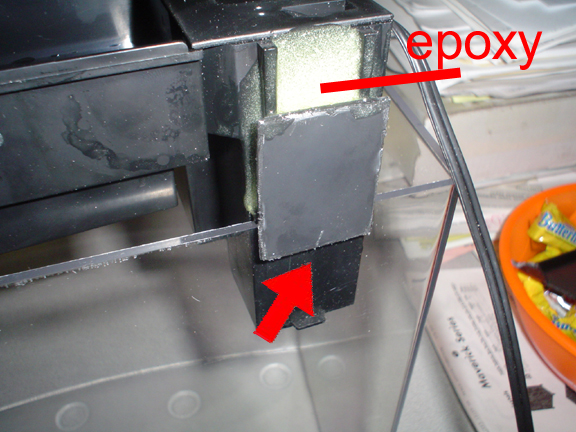
Mounting done:
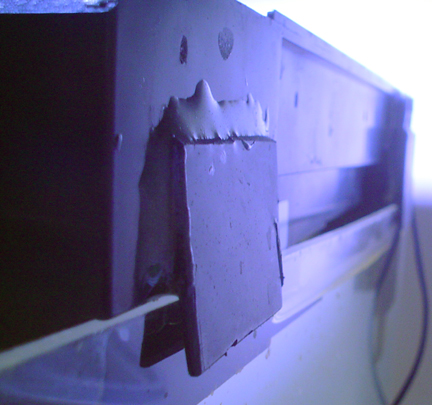
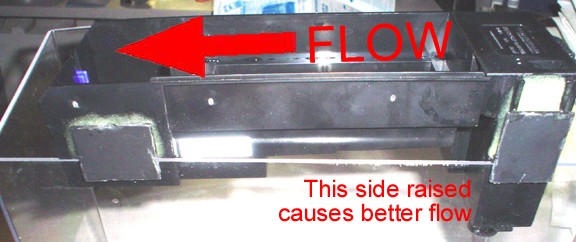
Now cut a piece of hard plastic (any color, any thickness) to fit in the filter box. Use sandpaper or a drill or a file to make the surface rough:
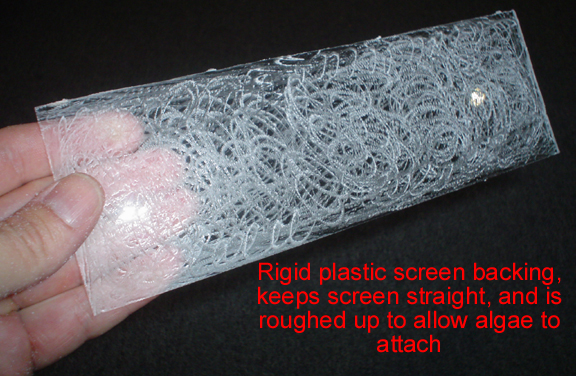
Now cut a piece of "Rug Canvas" or "Plastic Canvas" (found at any sewing or craft store, or online) to fit on the backing:
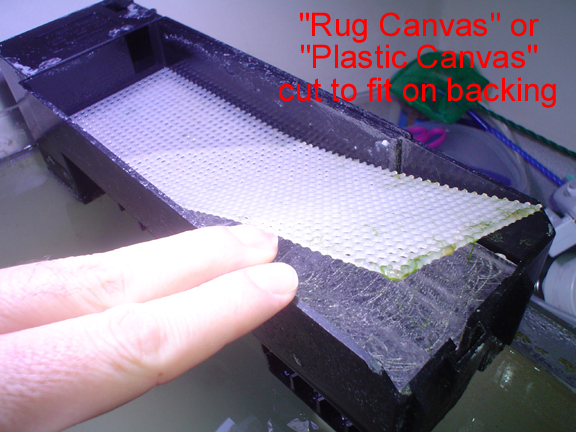
Looking from the backside, see how the filter box will set on the wall:

use a little bit of scrap plastic to raise this side a bit:

Now, epoxy some plastic sheet (I just cut them out from the hood material) onto the filter box so that it will hook onto the wall; the epoxy will also hold the little plastic scrap in place too:


Mounting done:


Now cut a piece of hard plastic (any color, any thickness) to fit in the filter box. Use sandpaper or a drill or a file to make the surface rough:

Now cut a piece of "Rug Canvas" or "Plastic Canvas" (found at any sewing or craft store, or online) to fit on the backing:

Part 3 of 3
Rug canvas is preferred because it lets the algae to attach better, but since rug canvas is flimsy, you'll need to epoxy it to the backing. Plastic canvas (pictured) is rigid and can just be set down on the backing, but it does not hold algae as well.
Here is the screen finished. Water should flow off the edges and drain out, but if it collects and gets too deep, cut a little section as shown and it will drain out rapidly:
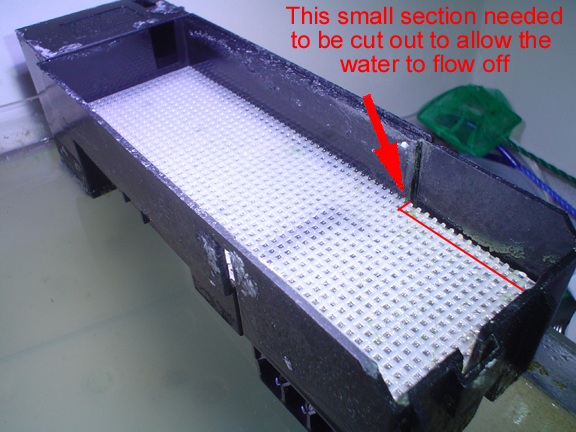
Attach your light; a halide was chosen so as to get good growth, easy attachment to the tank, and strong lighting for corals:
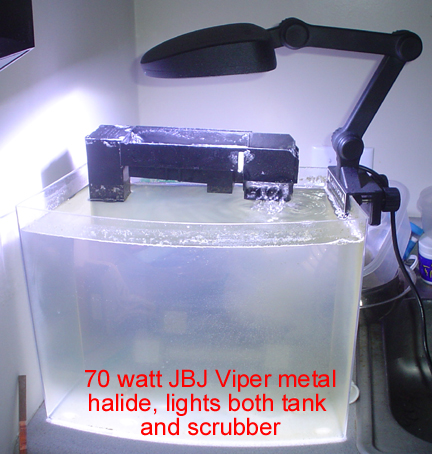
Here is the screen with a fews days of growth (food was put into the water to rot):
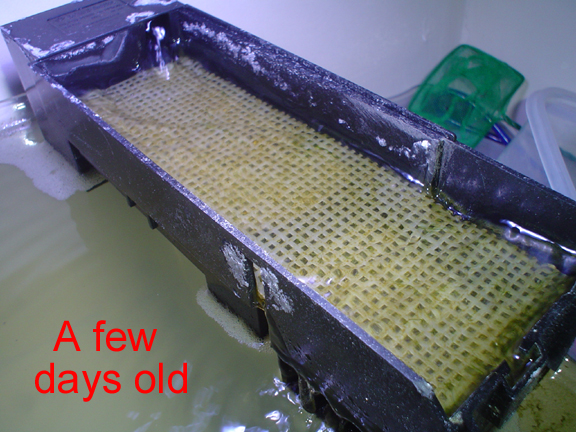
A few more days:
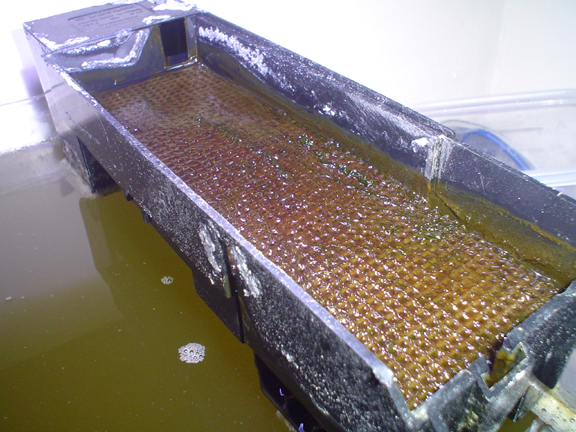
Begin to do your weekly cleanings, 1/2 per week:
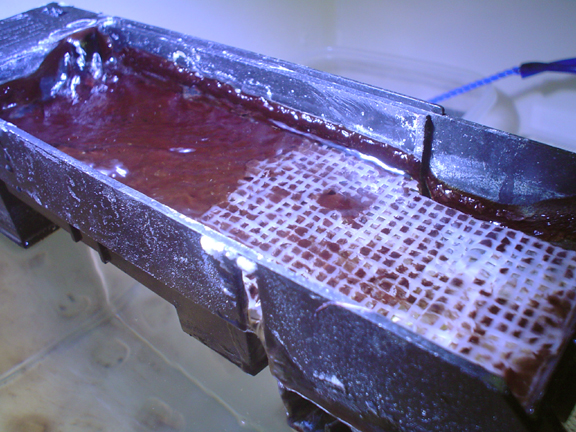
Cleaning video:
http://www.radio-media.com/fish/6galCleaning.mpg
If the pump ever stops, turn it over and remove the round part, and check to make sure the little wheel can turn freely:
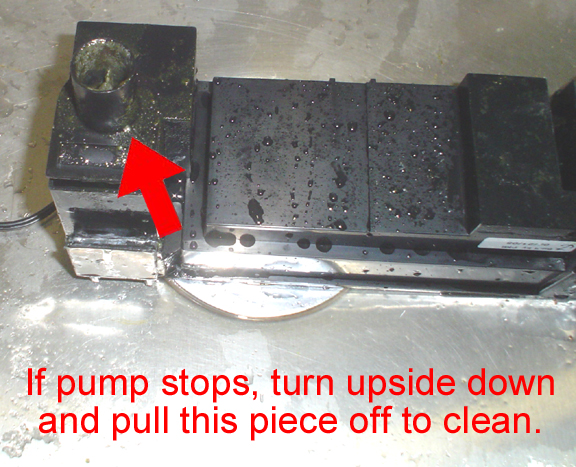
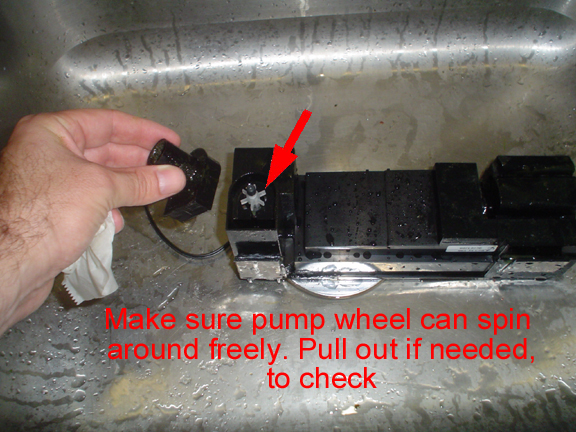
Pump check video:
http://www.radio-media.com/fish/6galPumpStop.mpg
That's it! Post your nano scrubber pics!
Rug canvas is preferred because it lets the algae to attach better, but since rug canvas is flimsy, you'll need to epoxy it to the backing. Plastic canvas (pictured) is rigid and can just be set down on the backing, but it does not hold algae as well.
Here is the screen finished. Water should flow off the edges and drain out, but if it collects and gets too deep, cut a little section as shown and it will drain out rapidly:

Attach your light; a halide was chosen so as to get good growth, easy attachment to the tank, and strong lighting for corals:

Here is the screen with a fews days of growth (food was put into the water to rot):

A few more days:

Begin to do your weekly cleanings, 1/2 per week:

Cleaning video:
http://www.radio-media.com/fish/6galCleaning.mpg
If the pump ever stops, turn it over and remove the round part, and check to make sure the little wheel can turn freely:


Pump check video:
http://www.radio-media.com/fish/6galPumpStop.mpg
That's it! Post your nano scrubber pics!
Succeses of the Week:
small_ranchu on the MFK site: "Here is the progress on my goldfish tank. 90 gallon tank with 3 goldfish + heavy feeding. Nitrate reading at the end of the week is usually around 40 PPM with a lot of brown algae on the wall. After 1 month of installing the Scrubber filter, Nitrate reading is 10 PPM and brown algae is disappearing slowly."
argi on the MD site: "I set up my scrubber on my 54 gallon tank a few weeks after its initial set up (it has been running for around 3 months now). One thing I have noticed on this tank compared to all my past tanks is the lack of algae growing on the glass. In the past I always left a magnet cleaner in the tank because I would have to scrub the brown diatom algae off the glass at least once per week. Now with this current tank I haven't had to clean off the glass nearly as often. While I still clean it, usually weekly to every other week, I can still see in the tank after 2 weeks!!! So far I am very happy with the results."
johnt on the UR site: "after 10 weeks of running a screen I can say it's the best method I've used, it also takes out metals and other nasties, and I've not even reached the turf algae stage yet. In the 10 weeks it's been running I've not run any reactors or the skimmer (I'm saving a small fortune not having to buy phosphate remover). I'm still running the refugium, Chaeto and deep sand bed, all corals are doing exceptionaly well, N&P are remaining low and rocks are looking better by the day."
Elliott on RC: "I built one about 5 wks ago and so far it seems to be working well. My cyano has diminished and there is less cleaning to do on the glass."
Mtroboer on the MASA site: "my algae is already visibly starting to disappear after only 1 1/2 weeks! Also added a PC Server fan in front of the screen and dropped my temps from 29.8 avg to 25.8 avg, saved me from buying a energy hungry chiller! First time in little more than a year I got to see results regarding getting rid of nuisance algae as well as dropping my high tempratures!"
Keifer1122 on the RS site: "Aquapod 12 gallon update: Its been couple days short of a month, and still no water change, my N & P have been at zero for 3 weeks now. everything is still growing just daily dosing, daily 2-3 feeding times a day, and weekly scrubbing"
bigtanner on RC: "I built this little one for about $65, pump, light, and all plumbing needed. Some people frown on these things and some people praise them. It's about like anything else really. I have had success with mine. Since building it and hooking it up, my tank is basically algae free. I also went from running my magnet daily to only running it every three to four days. [...] I never have any bad algae in my tank, my water is always crystal clear, and since adding it, I run my magnet a lot less than I used to.
corinna on the AC site: "I started out as a sceptic, but after spending a fortune on phosphate absorbers, carbon, sponges, water changes etc, Im convinced. Two months in, ive not done a water change or cleaned the glass, just to see what happened. Zooanthids are reproducing, seahorses are fat and active, values are reading zeroes. Scallops are happy. Plus I feed a lot."
small_ranchu on the MFK site: "Here is the progress on my goldfish tank. 90 gallon tank with 3 goldfish + heavy feeding. Nitrate reading at the end of the week is usually around 40 PPM with a lot of brown algae on the wall. After 1 month of installing the Scrubber filter, Nitrate reading is 10 PPM and brown algae is disappearing slowly."
argi on the MD site: "I set up my scrubber on my 54 gallon tank a few weeks after its initial set up (it has been running for around 3 months now). One thing I have noticed on this tank compared to all my past tanks is the lack of algae growing on the glass. In the past I always left a magnet cleaner in the tank because I would have to scrub the brown diatom algae off the glass at least once per week. Now with this current tank I haven't had to clean off the glass nearly as often. While I still clean it, usually weekly to every other week, I can still see in the tank after 2 weeks!!! So far I am very happy with the results."
johnt on the UR site: "after 10 weeks of running a screen I can say it's the best method I've used, it also takes out metals and other nasties, and I've not even reached the turf algae stage yet. In the 10 weeks it's been running I've not run any reactors or the skimmer (I'm saving a small fortune not having to buy phosphate remover). I'm still running the refugium, Chaeto and deep sand bed, all corals are doing exceptionaly well, N&P are remaining low and rocks are looking better by the day."
Elliott on RC: "I built one about 5 wks ago and so far it seems to be working well. My cyano has diminished and there is less cleaning to do on the glass."
Mtroboer on the MASA site: "my algae is already visibly starting to disappear after only 1 1/2 weeks! Also added a PC Server fan in front of the screen and dropped my temps from 29.8 avg to 25.8 avg, saved me from buying a energy hungry chiller! First time in little more than a year I got to see results regarding getting rid of nuisance algae as well as dropping my high tempratures!"
Keifer1122 on the RS site: "Aquapod 12 gallon update: Its been couple days short of a month, and still no water change, my N & P have been at zero for 3 weeks now. everything is still growing just daily dosing, daily 2-3 feeding times a day, and weekly scrubbing"
bigtanner on RC: "I built this little one for about $65, pump, light, and all plumbing needed. Some people frown on these things and some people praise them. It's about like anything else really. I have had success with mine. Since building it and hooking it up, my tank is basically algae free. I also went from running my magnet daily to only running it every three to four days. [...] I never have any bad algae in my tank, my water is always crystal clear, and since adding it, I run my magnet a lot less than I used to.
corinna on the AC site: "I started out as a sceptic, but after spending a fortune on phosphate absorbers, carbon, sponges, water changes etc, Im convinced. Two months in, ive not done a water change or cleaned the glass, just to see what happened. Zooanthids are reproducing, seahorses are fat and active, values are reading zeroes. Scallops are happy. Plus I feed a lot."
Well after three months of testing color temps, I've determined that 3000K out performs 6500K. It's not a huge difference, but enough to notice. At first they are about equal, but as the green hair gets over an inch thick, the 3000K continues getting thicker until it hits the acrylic wall (at 1.5"), whereas the 6500 stalls and rarely grows enough to reach the wall. So I'm ordering all T5HO 3000K replacement bulbs.
.
The Santa Monica Light-Screen
After much thought about design (but no ability to build), here is my version of a G3 scrubber:

A light-screen is a scrubber where the screen IS the light, and the light IS the screen. This changes the game when it come to scrubber performance in a small size. Unfortunately, you can't DIY these, unless you happen to be both a plastics engineer and an electronics engineer. However I thought that if I posted these, they may spark some ideas for regular scrubbers, or, someone may work for a manufacturer who can actually build them. I'll be the first to buy one.
As a reminder, G1 scrubbers are DIY sumps/buckets, while G2 scrubbers are enclosed acrylic boxes. G3 scrubbers have luminescent screens, whether they be LEDs, fiber optics, or lasers. My design is LEDs; so compared to buckets or acrylics, these plastic-covered LED light screens:
o Are ultra small/thin.
o Have no algae die-off (see drawing below).
o Are practically unbreakable.
o Are electrically safe (12 volts or less).
o Can be made as small as desired for nano's.
o Can easily be built into the hood of a nano.
o Are double-sided with almost no increase in size.
Disadvantages:
o They will be expensive (equivalent to good skimmers).
o They are impossible to DIY

Here is my version of a nano scrubber:

Same concept, just smaller, and replaces the skimmer, mechanical filter, and other filtering "devices" in pre-fab nano's like Aquapods, Red Sea Max's, etc. Would actually make nano's less expensive, better filtered, more compact, and more reliable.
.
.
The Santa Monica Light-Screen
After much thought about design (but no ability to build), here is my version of a G3 scrubber:

A light-screen is a scrubber where the screen IS the light, and the light IS the screen. This changes the game when it come to scrubber performance in a small size. Unfortunately, you can't DIY these, unless you happen to be both a plastics engineer and an electronics engineer. However I thought that if I posted these, they may spark some ideas for regular scrubbers, or, someone may work for a manufacturer who can actually build them. I'll be the first to buy one.
As a reminder, G1 scrubbers are DIY sumps/buckets, while G2 scrubbers are enclosed acrylic boxes. G3 scrubbers have luminescent screens, whether they be LEDs, fiber optics, or lasers. My design is LEDs; so compared to buckets or acrylics, these plastic-covered LED light screens:
o Are ultra small/thin.
o Have no algae die-off (see drawing below).
o Are practically unbreakable.
o Are electrically safe (12 volts or less).
o Can be made as small as desired for nano's.
o Can easily be built into the hood of a nano.
o Are double-sided with almost no increase in size.
Disadvantages:
o They will be expensive (equivalent to good skimmers).
o They are impossible to DIY

Here is my version of a nano scrubber:

Same concept, just smaller, and replaces the skimmer, mechanical filter, and other filtering "devices" in pre-fab nano's like Aquapods, Red Sea Max's, etc. Would actually make nano's less expensive, better filtered, more compact, and more reliable.
.
.
Update: CFL Bulb Lifetime
One of the CFL bucket scrubbers that I was testing began growing less and less algae, starting when it was about three months old. After five months, most growth had stopped. I did not think it could be the CFL bulbs because they looked fine, and they are supposed to last for years. But apparently this does not apply to algae growth, because after replacing the bulbs with new ones, growth immediately started again. These bulbs are cheap, so maybe a three-month replacement schedule should be followed.
One of the CFL bucket scrubbers that I was testing began growing less and less algae, starting when it was about three months old. After five months, most growth had stopped. I did not think it could be the CFL bulbs because they looked fine, and they are supposed to last for years. But apparently this does not apply to algae growth, because after replacing the bulbs with new ones, growth immediately started again. These bulbs are cheap, so maybe a three-month replacement schedule should be followed.
Fluorecent lamps of any type go through what is known as a break in period. For linears the first 100 or so hours of run time they are producing significantly more lumens than what they are officially rated for. I haven't seen any numbers for CF's though. Also the rating of "years" is only how long they will produce light. There is a major spectrum shift after the break in and another major one later on. It varies but I seem to recall 10,000 hours is a good rule of thumb. At that point is another major drop in intensity. Here's the thing... in all the info I've ever seen the shift is towards the red spectrum which should be fine for growing algae.
Basically, if your seeing growth issues after 3 months... Try a higher wattage lamp. That way once you do hit the break in point you should still be getting reasonable light output.
Chris
Basically, if your seeing growth issues after 3 months... Try a higher wattage lamp. That way once you do hit the break in point you should still be getting reasonable light output.
Chris
hey santa Monica....i finally finished building a scrubber for my brand new SW tank. ive taken alot of time to build it in to my entire system. One thing though, the tank is in my bedroom and it seems to be quite noisy when running. the sheath is 14"x14" and i have 63 Gal with sump. it is immersed in about 1 inch of water at bottom of bucket.
thanks
thanks

